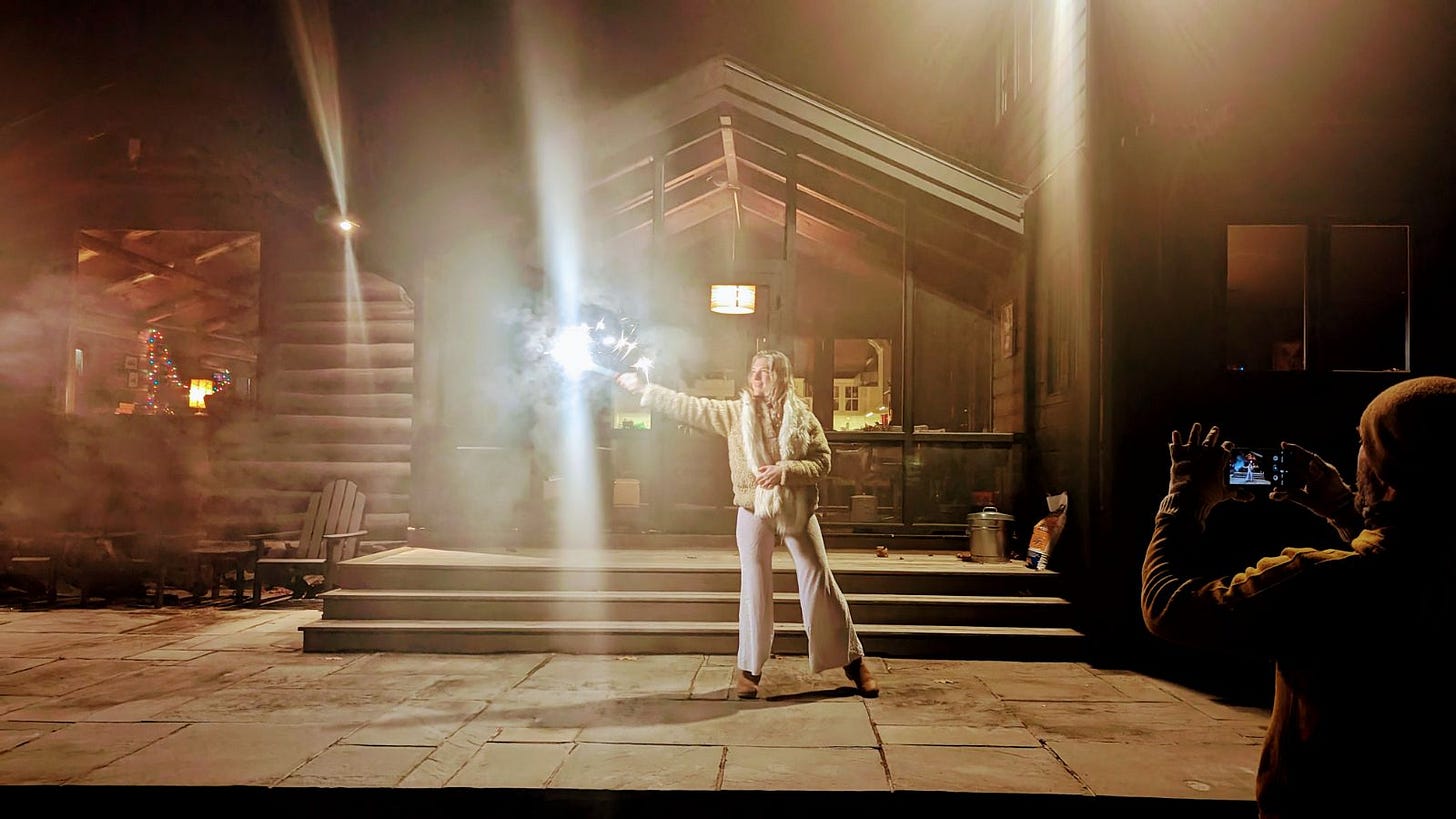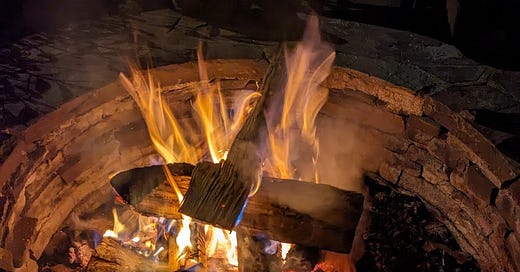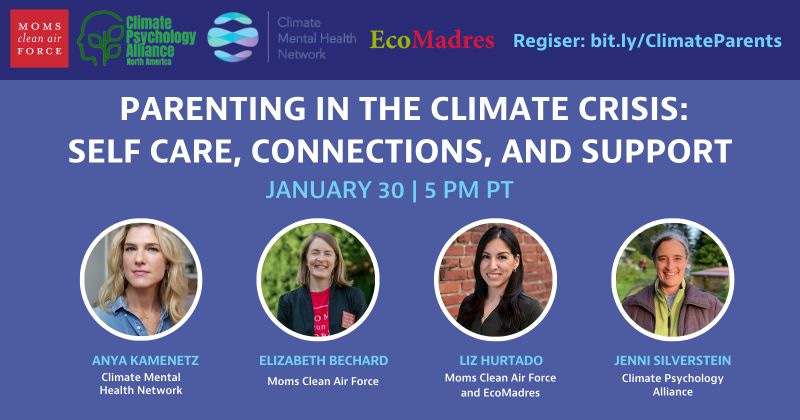Happy New Year, Talking To Kids, What The New York Times Got Wrong
A light dust of snow at midnight
Friends. This will not be the most polished newsletter edition. I’ve been sick more or less for two weeks, and this weekend my older child will be called to the Torah as a Bat Mitzvah, which means entertaining out-of-town family and producing an event on the scale of a smallish wedding.
I couldn’t be prouder, and I can’t wait to share some of their remarks with you next week, with their permission.
Grateful I got to ring in New Year’s the way I love most, with friends and family, in a house in the woods with a fire pit and lots of delicious food and sparklers.

Right after midnight we were graced by the lightest dust of snow, like baby’s breath. My 12-year-old and I caught it on our tongues. She knows exactly why it felt so special to all of us.
On the topic of less snow, I was really happy to read a column about parental climate anxiety in The New York Times by contributing opinion writer Elizabeth Spiers. (Gift link) Spiers talked about taking her eight-year-old home to Omaha, Nebraska, for the holidays, only to be greeted by 50-degree weather where there’s usually Arctic conditions. “I’m not sure our grandkids will even know what snow is,” one of her friends says, joking, but not.
Of course any time you read a mainstream article about your current topic of obsession, there are going to be quibbles.
For example, the statement: “Without significant climate change interventions we could have a future in our lifetimes where higher temperatures are the norm.”
My understanding of the science is that it’s much worse than that. Today’s higher temperatures—and temperatures higher than those—will be the norm for our lifetimes even with significant climate interventions. Unless and until we get to zero emissions, which requires heroic interventions, warming will not stop.

But my biggest issue is with what Spiers is telling her child about all of this. Or actually, what she’s not telling him. He’s not a sheltered kid or a particularly anxious one, she says, but
“he still experiences extreme weather as a novelty and not a threat. I hope he’s much older before he notices a drastic temperature change or more smoke in the air or the fact that it’s New Year’s Eve and there’s no snow on the ground at home.”
I’m sorry but I so disagree! First of all, I’m doing focus groups with parents around the country about climate emotions, and let me tell you: even toddlers get upset when they can’t go outside because of wildfire smoke, and three year olds are asking their moms where the snow has gone. They are little living beings, attuned to the living world, and they understand in their bones this is not normal.
But there’s something we can do. When I co-created the Life Kit : Parenting podcast for NPR, we focused on difficult conversations: talking to kids about death, about divorce, about race, about sex, about scary things in the news, and about climate change.
The lessons were consistent. Kids have antennas to pick up on our anxiety and other feelings, so hiding from them backfires. (And in the age of the Internet they may have heard more than we know). There are age-appropriate ways to tell the truth while also reassuring them. Sharing basic facts can keep kids safer and better prepare them for the world. All of this requires managing your own adult feelings, which, guess what, is going to be better for you too. And, the outcome of that conversation will probably be that you take positive action together as a family, which is better for you and for the world too.
With Climate Mental Health Network, we have a guide and a script for open ended conversations with kids, including elementary school students about climate. And, on January 30th we’re co-hosting an interactive webinar offering connections, self-care and support for parents having this difficult conversation. Link to register here.






